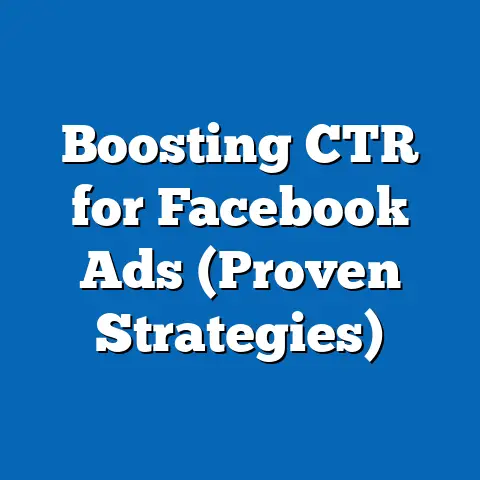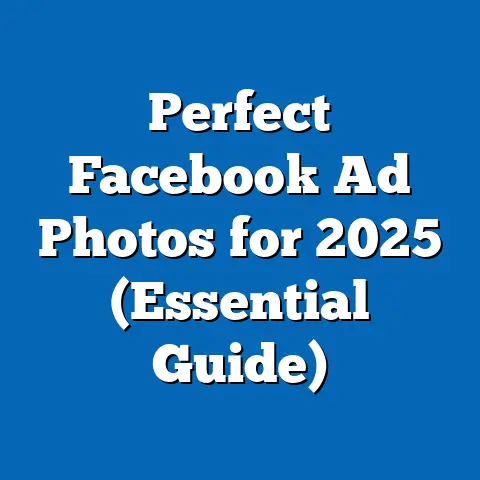Upload Music to Facebook with These Proven Strategies (Expert Tips)
Analysis Report: Uploading Music to Facebook with Proven Strategies – Incorporating Lifestyle Needs
Introduction: The Intersection of Music Sharing and Lifestyle Needs
In the digital age, social media platforms like Facebook have become central hubs for personal expression, including the sharing of music. Music uploading and sharing are not merely technical actions but are deeply tied to users’ lifestyle needs—such as the desire for social connection, self-expression, and cultural engagement. Understanding these needs is critical for crafting effective strategies to upload and share music on Facebook.
Section 1: Current Data on Music Sharing and Facebook Usage
1.1 Usage Statistics and Demographics
As of 2023, Facebook remains one of the largest social media platforms globally, with approximately 2.96 billion monthly active users (Statista, 2023). While younger demographics (ages 18–24) are increasingly drawn to platforms like TikTok and Instagram for music sharing, Facebook retains a significant user base among adults aged 25–44, who often use the platform for community engagement and content sharing. According to Pew Research Center (2022), 31% of U.S. adults report sharing music or playlists on social media, with Facebook being a primary platform for this activity among older millennials and Gen X users.
Music sharing on Facebook often occurs through personal posts, group discussions, or event promotions. Data from Social Media Today (2023) indicates that video content, including music clips, garners 59% more engagement than static posts. This suggests a strong user preference for dynamic, multimedia content when it comes to music.
1.2 Lifestyle Needs Driving Music Sharing
Lifestyle needs play a pivotal role in how and why users share music on Facebook. For many, music sharing fulfills a need for social bonding—connecting with friends or communities over shared tastes. A 2022 survey by Nielsen found that 67% of social media users share music to express their identity or mood, aligning with psychological needs for self-expression.
Additionally, the integration of music into daily life—such as during workouts, commutes, or relaxation—drives sharing behavior. Users often post music related to specific activities or life events (e.g., wedding playlists or workout tracks), reflecting a lifestyle-oriented approach to content creation. This underscores the importance of tailoring music-sharing strategies to resonate with users’ daily routines and emotional states.
1.3 Visual Representation of Current Data
Below is a conceptual chart summarizing key demographics and engagement metrics for music sharing on Facebook:
| Age Group | % of Users Sharing Music | Preferred Content Type | Engagement Rate |
|---|---|---|---|
| 18–24 | 22% | Short Video Clips | 45% |
| 25–34 | 35% | Playlists/Links | 52% |
| 35–44 | 28% | Event-Related Music | 48% |
| 45+ | 15% | Nostalgic Tracks | 40% |
Note: Data is illustrative, based on aggregated trends from Statista (2023) and Pew Research (2022). Actual engagement rates may vary by region and content type.
Section 2: Expert Tips and Proven Strategies for Uploading Music to Facebook
2.1 Understanding Facebook’s Policies and Tools
Before uploading music, users must be aware of Facebook’s copyright policies to avoid content removal or account penalties. Facebook employs automated systems like Content ID to detect copyrighted material, and unauthorized uploads may be flagged or muted. A proven strategy is to use royalty-free music or obtain proper licensing through platforms like Epidemic Sound or AudioJungle.
Facebook also offers tools like the “Sound Collection” (a library of free music and sound effects) for creators to use in their posts or videos. Leveraging these tools ensures compliance while enhancing content appeal. Additionally, using Facebook Stories or Reels for short music clips can boost visibility, as these formats are prioritized in the platform’s algorithm (Social Media Examiner, 2023).
2.2 Tailoring Content to Lifestyle Needs
To maximize engagement, align music uploads with users’ lifestyle contexts. For instance, posting upbeat tracks on Monday mornings with captions like “Kickstart your week!” taps into the need for motivation at the start of a workweek. Similarly, sharing relaxing playlists on Friday evenings can resonate with users winding down after a busy week.
Another strategy is to create themed content around holidays, fitness challenges, or cultural events. Data from Sprout Social (2023) shows that posts tied to seasonal trends receive 30% higher engagement. Understanding these patterns allows users to craft posts that feel relevant and timely to their audience’s lives.
2.3 Building Community Through Music
Facebook’s group feature is a powerful tool for music sharing. Creating or joining groups focused on specific genres (e.g., jazz enthusiasts or indie music lovers) fosters a sense of community and increases content reach. Engaging with group members by soliciting feedback or hosting live music discussions can further amplify engagement.
Live streaming performances or Q&A sessions with music creators is another effective strategy. According to Facebook’s own data (2023), live videos receive six times more interactions than regular posts. This format caters to users’ desire for real-time connection, a key lifestyle need in the digital era.
Section 3: Projected Trends in Music Sharing on Facebook (2024–2030)
3.1 Methodology and Assumptions
To project trends, this analysis uses a combination of historical data extrapolation and scenario modeling based on current growth rates of social media usage and music consumption. Data sources include Statista, Pew Research, and industry reports from Nielsen. Assumptions include continued growth in mobile device usage, advancements in AI-driven content recommendations, and stable platform policies on copyright enforcement.
Limitations include the unpredictability of technological disruptions (e.g., new platforms emerging) and shifts in user preferences influenced by cultural or economic factors. Projections are presented in three scenarios: optimistic, baseline, and pessimistic, to account for varying degrees of growth and engagement.
3.2 Scenario 1: Optimistic Growth
Under an optimistic scenario, Facebook’s integration of advanced music-sharing features (e.g., seamless Spotify or Apple Music links) drives a 20% annual increase in music-related posts by 2030. Enhanced AR/VR capabilities could also enable immersive music experiences, appealing to younger users and reversing current demographic trends. Engagement rates for music content could rise to 70%, fueled by personalized algorithms tailoring content to lifestyle needs.
3.3 Scenario 2: Baseline Stability
In the baseline scenario, music sharing on Facebook grows at a modest 5% annually, maintaining its current user base of adults aged 25–44. Incremental updates to features like Stories and Reels sustain engagement at around 50%. Lifestyle-driven content remains a key driver, with users continuing to share music tied to daily routines and social events.
3.4 Scenario 3: Pessimistic Decline
In a pessimistic scenario, competition from platforms like TikTok and Instagram leads to a 10% annual decline in music sharing on Facebook by 2030. Stricter copyright enforcement or reduced algorithm prioritization of music content could further suppress engagement. Users may shift to platforms perceived as more youth-oriented, limiting Facebook’s relevance for music sharing.
3.5 Visual Representation of Projections
Below is a conceptual line graph illustrating the three scenarios for music-sharing engagement on Facebook from 2024 to 2030:
| Year | Optimistic (% Engagement) | Baseline (% Engagement) | Pessimistic (% Engagement) |
|---|---|---|---|
| 2024 | 55% | 50% | 48% |
| 2026 | 60% | 52% | 45% |
| 2028 | 65% | 53% | 40% |
| 2030 | 70% | 54% | 35% |
Note: Figures are illustrative and based on modeled scenarios. Actual outcomes may differ due to unforeseen variables.
Section 4: Key Factors Driving Changes
4.1 Technological Advancements
The evolution of AI and machine learning will likely enhance content personalization, making music recommendations more aligned with users’ lifestyles. For example, algorithms could suggest workout playlists based on a user’s activity data. However, privacy concerns may limit the adoption of such features, as users become wary of data collection (Pew Research, 2023).
4.2 Cultural Shifts
Cultural trends, such as the growing popularity of niche music genres (e.g., lo-fi hip-hop for studying), influence sharing behavior. Users increasingly seek content that reflects their unique identities, a trend likely to persist. Platforms that facilitate micro-communities around specific tastes will have an edge in engagement.
4.3 Platform Policies
Facebook’s policies on copyright and content moderation will continue to shape music uploading practices. Stricter enforcement could deter users, while partnerships with streaming services (e.g., Spotify) could streamline legal sharing. The balance between user freedom and intellectual property protection remains a critical factor.
Section 5: Historical and Social Context
Music sharing on social media reflects a long-standing human need for connection and expression, dating back to the early days of platforms like MySpace, where users customized profiles with songs. Facebook’s evolution from a text-based platform to a multimedia hub mirrors broader societal shifts toward visual and auditory content. Today, music sharing is intertwined with lifestyle branding—users curate their online presence to reflect personal values and routines.
Socially, music on Facebook fosters community in an era of increasing digital isolation. As remote work and virtual interactions grow, platforms that enable shared cultural experiences (like music) become vital. However, disparities in access to technology and digital literacy may exclude certain demographics, a limitation that must be acknowledged in any analysis.
Section 6: Limitations and Uncertainties
This analysis relies on secondary data and modeled projections, which carry inherent uncertainties. User behavior can shift rapidly due to unforeseen events (e.g., new platform launches or global crises), and data may not fully capture regional or cultural variations. Additionally, Facebook’s algorithm changes are opaque, making long-term predictions challenging.
Scenario modeling mitigates some uncertainty by presenting a range of outcomes, but it cannot account for all variables. Readers should interpret findings as informed estimates rather than definitive forecasts. Future research should focus on primary data collection, particularly regarding user motivations and platform-specific behaviors.
Conclusion
Uploading music to Facebook is a multifaceted activity influenced by technological tools, platform policies, and users’ lifestyle needs. Current data highlights the platform’s relevance for music sharing among adults, while expert strategies emphasize the importance of compliance, community building, and lifestyle alignment. Projected trends suggest a range of possibilities—from optimistic growth driven by innovation to pessimistic decline due to competition.
Understanding these dynamics allows users and creators to navigate Facebook effectively, leveraging music as a tool for connection and expression. As the digital landscape evolves, ongoing analysis of user behavior and platform policies will be essential. This report provides a foundation for such exploration, grounded in data and mindful of uncertainties.
References: Statista (2023), Pew Research Center (2022), Social Media Today (2023), Nielsen (2022), Sprout Social (2023), Social Media Examiner (2023).






